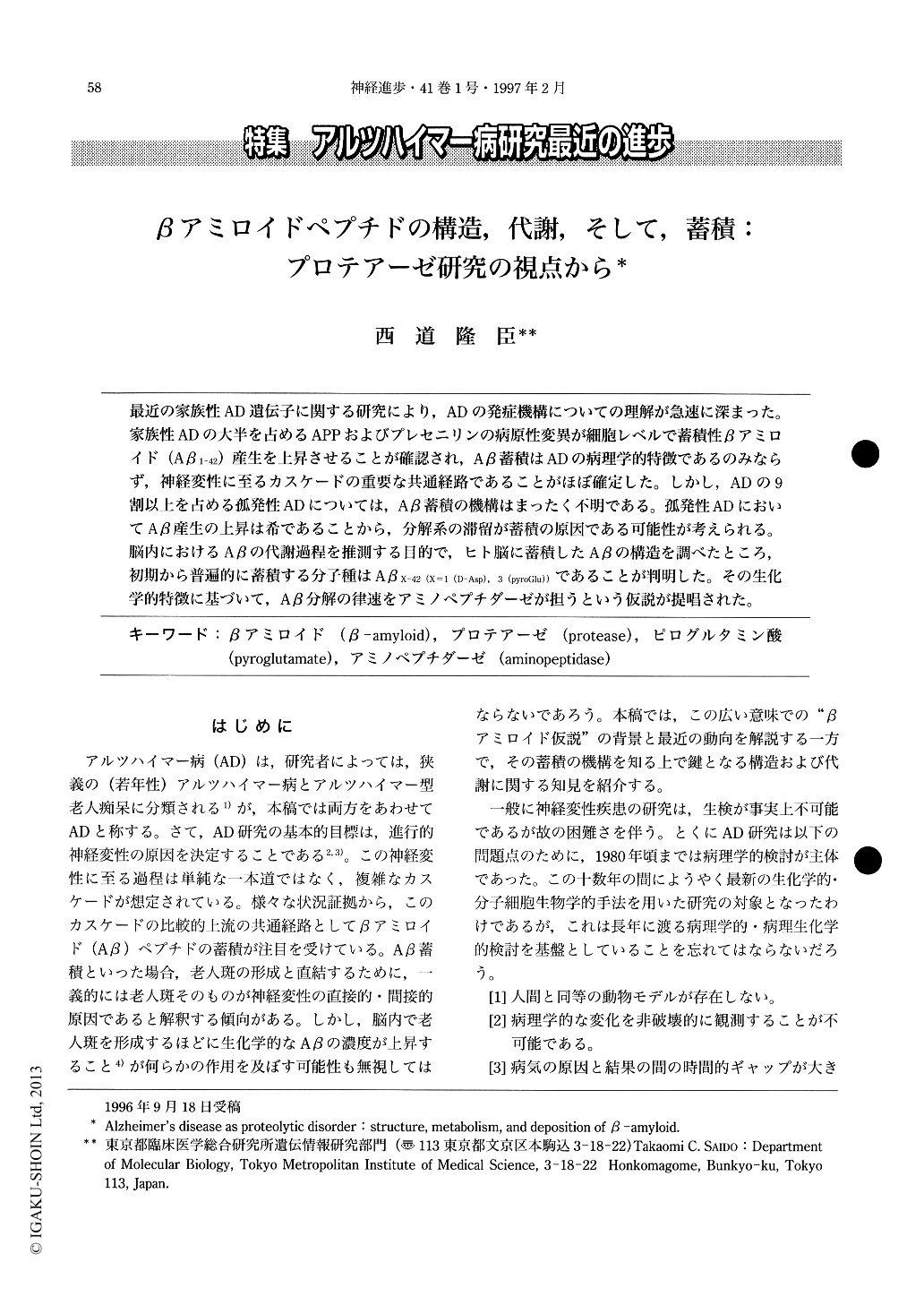Japanese
English
- 有料閲覧
- Abstract 文献概要
- 1ページ目 Look Inside
最近の家族性AD遺伝子に関する研究により,ADの発症機構についての理解が急速に深まった。家族性ADの大半を占めるAPPおよびプレセニリンの病原性変異が細胞レベルで蓄積性βアミロイド(Aβ1-42)産生を上昇させることが確認され,Aβ蓄積はADの病理学的特徴であるのみならず,神経変性に至るカスケードの重要な共通経路であることがほぼ確定した。しかし,ADの9割以上を占める孤発性ADについては,Aβ蓄積の機構はまったく不明である。孤発性ADにおいてAβ産生の上昇は希であることから,分解系の滞留が蓄積の原因である可能性が考えられる。脳内におけるAβの代謝過程を推測する目的で,ヒト脳に蓄積したAβの構造を調べたところ,初期から普遍的に蓄積する分子種はAβx-42(x=1(D-Asp),3(pyroGlu))であることが判明した。その生化学的特徴に基づいて,Aβ分解の律速をアミノペプチダーゼが担うという仮説が提唱された。
Recent studies on familial Alzheimer's disease-linked mutations in the genes encoding amyloid precursor protein and presenilin 1 and 2 have established the pathogenic role of β-amyloid (Aβ) deposition as a common pathway leading to neurodegeneration. Evidence is accumulating to indicate that most of these mutations contribute to Aβ deposition by directly causing increased cellular production of Aβ1-42, a form of Aβ with high insolubility attributed to the carboxyl-terminal structure.

Copyright © 1997, Igaku-Shoin Ltd. All rights reserved.


